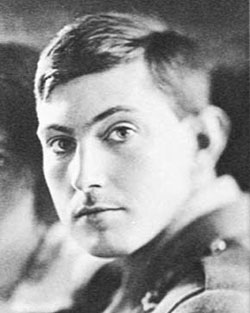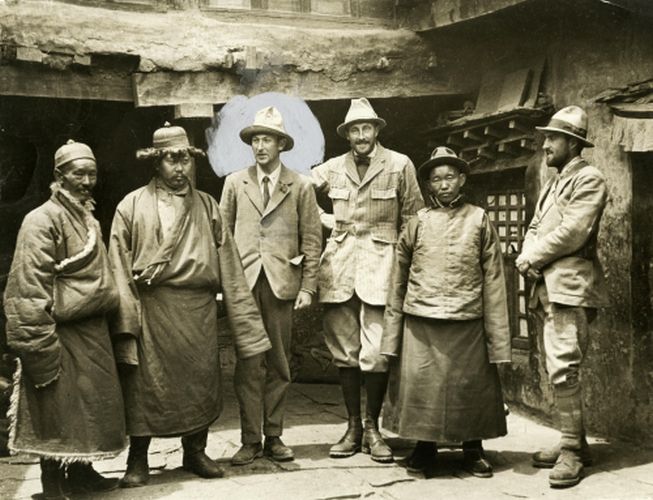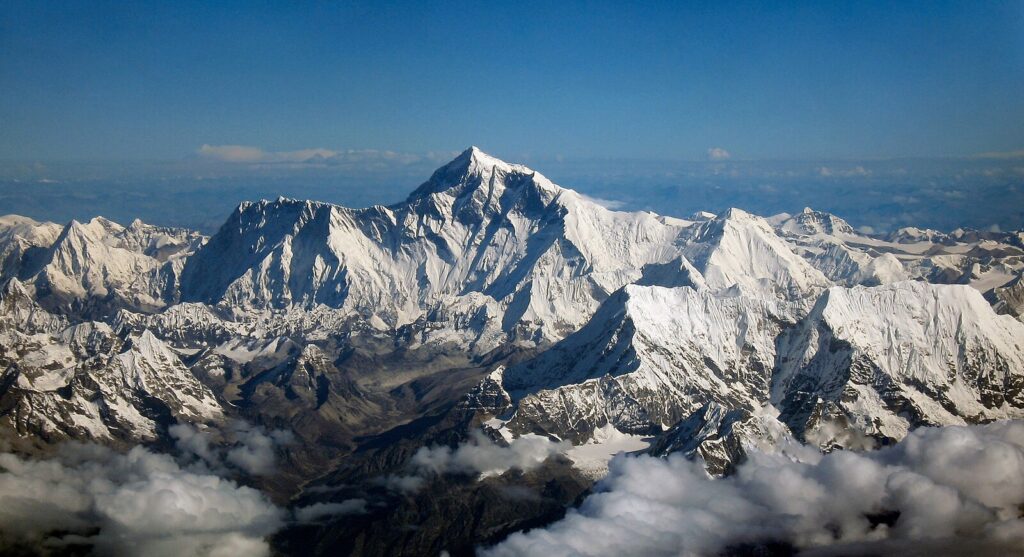When we talk about history’s greatest firsts, several landmark achievements come to mind. In 1969, Neil Armstrong did what many thought could never be done, becoming the first person to step foot on the moon.
Charles Lindbergh became the first person to fly across the Atlantic in 1927. In terms of sailing around the world, while many think it was Christopher Columbus, it was actually Ferdinand Magellan from 1519 to 1522.
But one historic achievement is a bit of a mystery: nobody knows who was the first person to climb Mount Everest. While official records give that honor to Edmund Hillary in 1953, many historians say George Mallory may have reached that peak first in 1924.
Mallory led one of the first British expeditions up the world’s highest mountains. However, he disappeared, and for the longest time could not be found.
His body wasn’t discovered until 75 years later, very near the top of the summit. It has led to one of history’s greatest mysteries: Did Mallory actually reach the top of Mount Everest?

Who Was George Mallory?
George Mallory started as a clergyman, studying at Winchester College. However, as time passed, he developed a strong passion for climbing after he was recruited by one of his teachers to go on a hiking trip to the Alps.
Many who knew Mallory say he was apt at it. He picked up the skill quickly and mastered the ability to conquer new routes.
But climbing was never Mallory’s main job. Instead, he was a soldier during World War I, serving in France. He also taught in 1919 in Cambridge, England, after the war was over.
But climbing was always his passion, as evidenced by him being a top member of the Alpine Club. This was a prestigious group for only the best climbers.
In 1921, it was announced that there would be a British Mount Everest Reconnaissance Expedition, and Mallory would be a big part of the team. The ambitious Mallory had always said it was a dream of his to reach the top of Mount Everest.
When someone asked why he would want to do it, he simply responded with, “It’s there.”
The Expeditions
In the early 1920s, climbing and reaching the top of Mount Everest was seen as the next big discovery. The North and South Pole had been navigated, and the sources of all the world’s major rivers were uncovered.
Efforts were now underway by teams to try and become the first to reach the world’s highest point, a 29,035-foot mountain located in the Himalayan Mountains bordering Nepal and China. This was known as the “Third Pole.”
Mallory was an integral part of the expedition team. He helped map out the first expedition in 1921, trying to find a route to reach the summit. However, high winds ended the mission after making substantial progress.
Mallory was also a part of the second expedition in 1922, which included the use of bottled oxygen. The team reached 27,300 feet before an avalanche killed some of the team’s members and were forced to cancel the rest of the journey.
The third expedition happened in 1924, one of which the now 38-year-old Mallory was extremely confident he would succeed with. However, he was concerned he’d never make it back home.
Mallory was steadfast in doing what no one else could ever do. When high winds and heavy snow forced most of the members to stay behind, Mallory and partner Andrew Irvine kept going, determined to reach the summit.
However, they were running out of supplies and oxygen, and people that knew Mallory came to the conclusion that he would die trying to reach the top.
Irvine was an important of Mallory’s attempt to push forward. Irvine was an expert with oxygen tanks, and Mallory had come around to the fact that they could not survive the full journey without the help of artificial air. Irvine’s ability to rebuild unreliable rigs was essential to the mission.

The Final Expedition
On June 6, the men were at 23,100 feet, and could arguably reach the top of the summit within three days, which would mark a historical achievement. By June 8, they had gotten to 26,800 feet.
Shortly after this, geologist Neil Odell, who had gone with them earlier in the expedition and stayed behind, had spotted them journeying up the mountain through the mist. They were roughly one day from becoming the first men in history to reach the summit of Mount Everest.
Unfortunately, that was the last report of anyone having seen Mallory and Irvine, both of whom disappeared into the clouds that came sweeping down. Odell reported that a strong snow squall moved in at the top of the mountain.
He found oxygen canisters in one of their last tents. He continued looking for signs of life from the men.
Odell reached the last camp of Mallory and Irvine. He waited with anxiety for the men to return, but no one came.
In his tent, he found a torch. If Mallory had remembered to take it, he could have sent up flares showing where he was. Hope quickly vanished inside Odell when he couldn’t find his friends.
A few days later, news spread that Mallory was lost and likely dead.
Evidence for Mallory Reaching the Summit
Debates began to grow that Mallory and Irvine did, in fact, get to the summit of Mount Everest. According to Odell, the last man to have seen them, the two men were going very strong.
He claimed that they had reached what is called “The Second Step,” which is very near the base of the base of the summit pyramid. Once past this very steep step, which ascends to 28,250 feet, you reach the pyramid which takes you to the top of the mountain.

In the 1930s, the first piece of evidence that Mallory had advanced past where he was last seen was confirmed. His axe was discovered at 27,700 feet. Other items were found in the coming years.
A Chinese explorer, traveling the same expedition as Mallory and Irvine, found a body in 1975. Many believed this was the body of Irvine. In 1991, an oxygen canister was found.
Mallory’s body was eventually found at 26,760 feet in 1999, and a study showed he died of a bad fall. However, the question is where did he fall from? Mallory was buried at the site where he was discovered.
Over the years, mountaineers have conducted studies to try and uncover the mystery of what happened to Mallory and Irvine. Most experts don’t believe the men could have survived making it up the Second Step with the supplies they had.
It’s an extremely difficult and steep rock, where you need rope, anchors, and a ladder. These were eventually added to the Second Step to help one reach the summit.
The answer to whether the two men reached the Summit may still one day be answered. A camera is still missing, and if that is found, it could provide evidence as to where the men were last seen. Until then, the debates will continue.
References
“George Mallory: British Explorer and Mountaineer.” Britannica.com. 9 Nov 2023. https://www.britannica.com/biography/George-Mallory.
Clark, Lisel. “The Mystery of Mallory & Irvine ‘24.” PBS. Nd. https://www.pbs.org/wgbh/nova/everest/lost/mystery/.

